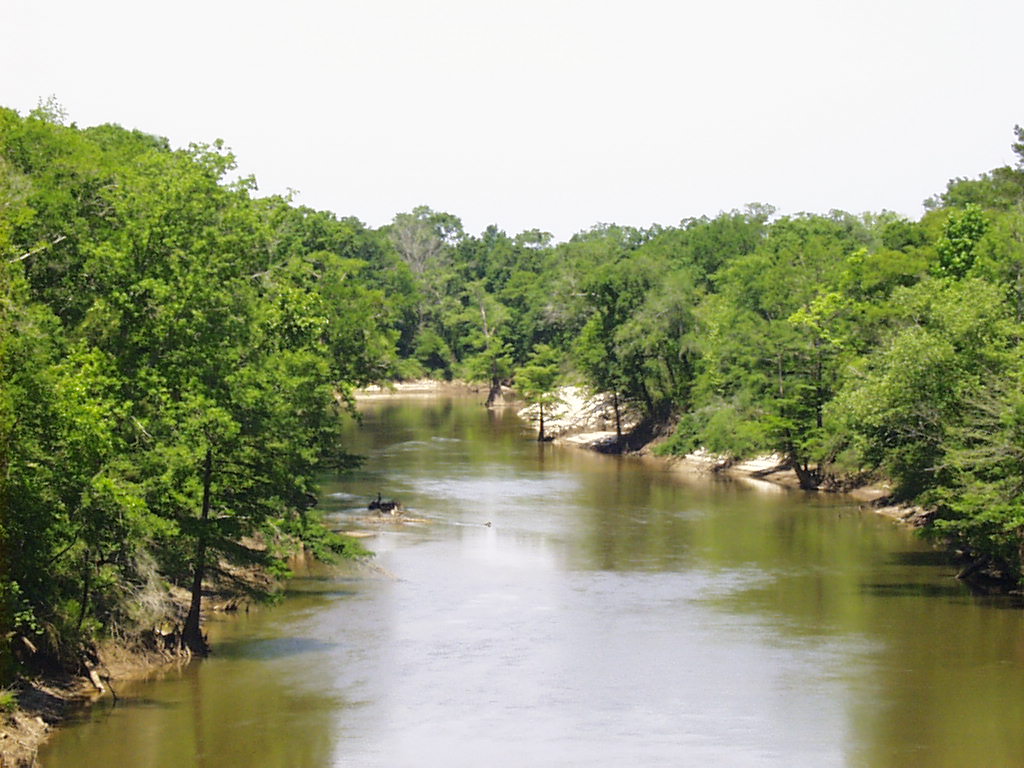| CPM Photo Gallery |

This is a Photograph of the Woodruff Dam located in Chattahoochee, Fl. Water released there forms the headwaters of the Apalachicola River. We have a Fisher Porter gauge at the dam that's maintained by the U.S. Army Corps of Engineers.

You're looking upstream at the Pea River in Geneva, Al. We have a wire weight gauge there that is read by the police department every morning.
| Wire Weight Gauge |

The wire weight gauge is one of several types of river gauges used by the National Weather Service (NWS) to measure river stage. The Type A wire weight gauge used by the NWS (pictured) consists of a drum wound with a single layer of stainless steel cable, a heavy brass weight attached to the cable's end, a raduated disk, and a veeder counter mounted in a lockable cast metal box. One revolution of the cable drum equals one foot of cable in length. The drum's disk is graduated in tenths and hundredths of a foot and is connected to the veeder counter which advances by one with each full revolution of the drum. The cable is made of 0.045 inch diameter stainless steel wire, geometrically wound, and is guided to smoothly fill the drum by means of a threaded sheave. The wire weights reel assembly is equipped with a ratchet used to lock the drum and cable in any position by means of a pawl.
| Universal Rain Gauge |

The Universal Rain Gauge collects precipitation in a bucket. The bucket presses down on a scale as precipitation falls in. It records an ink trace on a mounted metal drum that rotates once every 24 hours.
| Standard Rain Gauge |

There are several types of gages used but the two basic types are recording and non recording. The most common is the non recording gauge called a Standard Rain Gauge (SRG). Typically the SRG is a metal cylinder with a funnel on top and a plastic measuring tube in the middle. The measuring tube can handle up to 2.30 inches of rain before overflowing into the larger outer cylinder.
| Maximum-Minimum Temperature System |

Another and newer type of thermometer is the Maximum Minimum Temperature System or MMTS. An MMTS is an electronic thermometer not too different from the type you buy at the local electronics store. The MMTS is a thermistor housed in a shelter (top) which looks similar to a bee hive. This design is similar in functionality to the CRS. The lower picture shows the display unit.
| Fisher/Porter Gauge |

Another type of precipitation gauge is the recording gauge. The most common type is the Fisher/Porter (F&P) gauge, developed by the Belfort Instrument Company. The Fisher /Porter gauge (pictured above) is designed to work for many years in remote and harsh environments. The F&P gauge weighs the precipitation it collects in a large metal bucket. This bucket sits atop a mechanism which punches holes in a paper tape, recording the amount of precipitation.
| Cotton Region Shelter |

Some cooperative observers use the Cotton Region Shelter (CRS) to record maximum and minimum temperature data. A CRS is typically a wooden structure with louvered sides, a slotted bottom and solid top. It is usually made of pine, painted white, and sits atop a wooden or metal base, 5 to 6 feet above the ground.